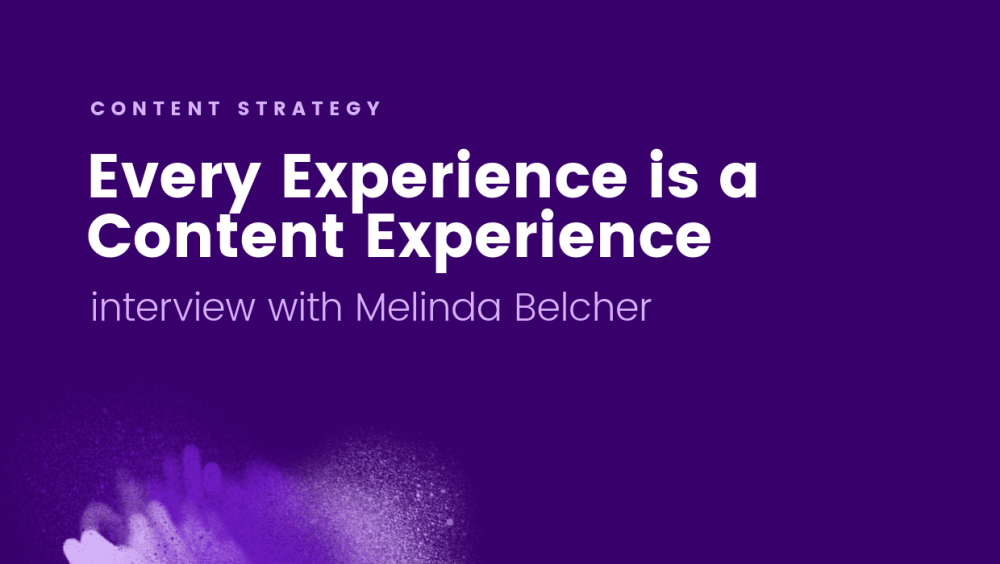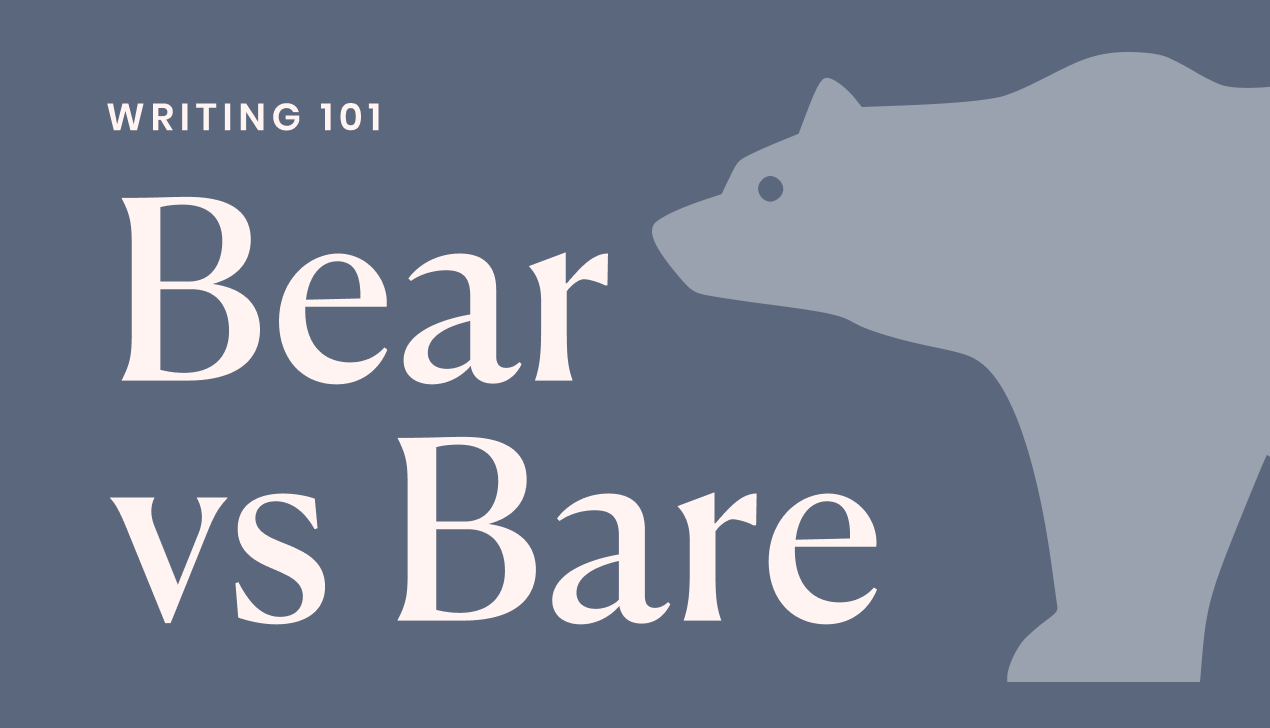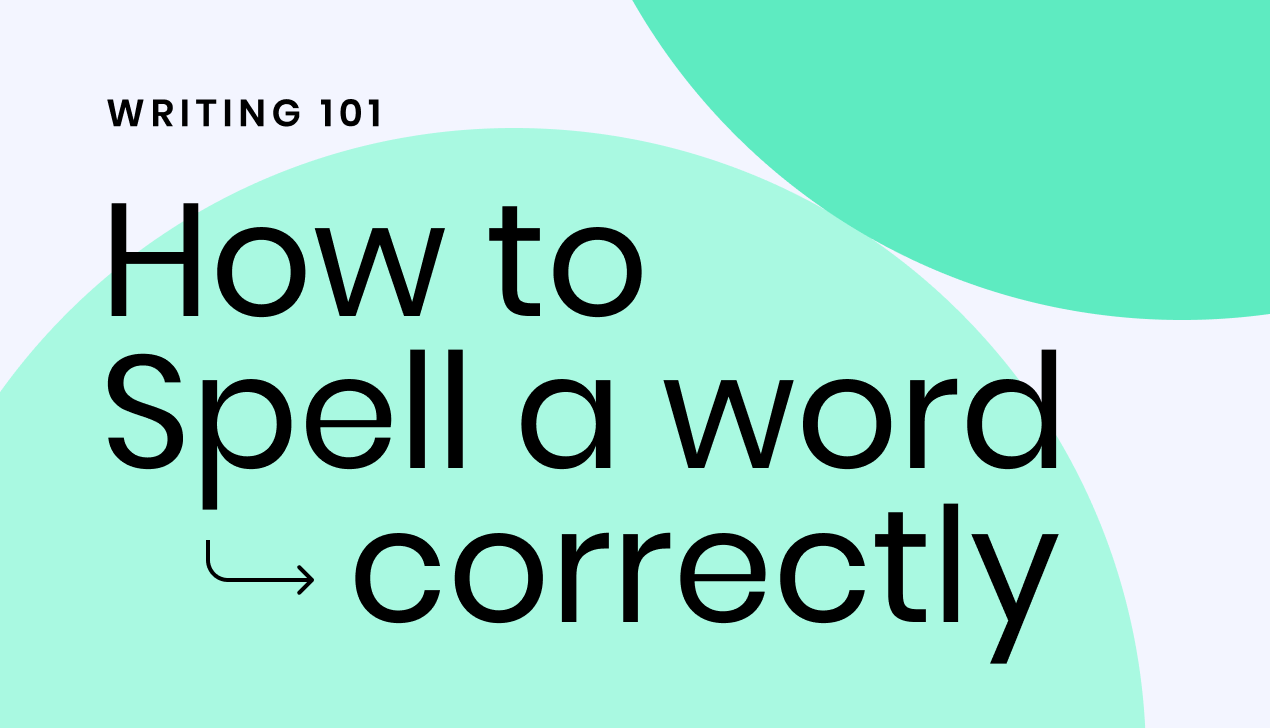Words at work
– 11 min read
Every Experience is a Content Experience
Interview with Melinda Belcher

We had the opportunity to talk with Melinda Belcher, Senior Director of Digital Experience at Mastercard. A self-proclaimed content nerd, she has been working in content strategy and UX copywriting for almost twenty years.
In this interview, we talk about:
- How she entered the field
- How she grows content strategy and content design teams
- Misconceptions (and corrections) about the role
- Advice and tools for success
- Predictions for the future of the field
Q&A with Melinda Belcher
About Melinda: Melinda’s work brings a great wealth of B2B experience from working for companies such as Salesforce, BBVA Compass, and Blue Cross Blue Shield during her time as Director of Brand and Experience Strategy at K Street Partners. She also worked with IBM and VSA to establish the IBM Marketing Experience Lab in Tokyo.
Melinda graduated from the University of Missouri-Columbia, where she studied Journalism, Spanish, and Linguistics. She holds an MFA in Creative Nonfiction Writing from The New School in New York, and is an advisory board member of Rutgers University’s Center for Innovation Education.
1. Can you tell us about your background, your current role at Mastercard, and how you got there?
I like to build content teams from the ground up. I started in the nonprofit world, designing curriculum and managing websites, and then moved into brand and design agencies. I was the first writer/content strategist ever hired at Interbrand and frog, and I helped build content strategy teams at Havas and IBM as well. In my work with IBM, I began to transition away from marketing into product and have been building my expertise as a product content designer.
I jumped at the chance to build a team at Mastercard, focused on digital payment products and services, because it presented a unique challenge. It takes a special type of nerd to love B2B content and an even special-er type of nerd to love B2B2C content.
2. You gave a talk at Lavacon 2018 about how you’ve scaled your team by working with freelancers. Can you tell us more about how you did that, the challenges, and how you’ve integrated that into your team’s overall strategy?
When you’re building a team, staffing is always a challenge. I once managed a team of 7 freelancers and 2 full-timers across 9 projects, which was exhausting. It feels like you spend half your time arguing to extend contracts and begging other departments for money. The good thing is that if you can keep a freelancer on long enough, and demonstrate value in what they’re producing, it’s a bit easier to make the case for converting that person from a cost-benefit perspective.
I also treat freelancers as much like full-timers as I am able. Finding educational opportunities, inviting them to team offsites, etc. This helps cut down on retention and keeps up a team culture of communication and collaboration.
3. Do you find that there are misconceptions about the role of a content strategist?
The biggest misconception is that content strategists are copywriters. The idea that the ”content person” will come along and shove some actual words where the lorem ipsum is. The most frustrating part for me is that I’m often having to evangelize for our work with UX designers, who don’t see why “the writer” has an opinion about the content hierarchy or layout of information on a screen.
The biggest misconception is that content strategists are copywriters.Click To TweetI’ve tackled this in a few ways — lunch and learns, before and after decks of the most egregious screens we’ve fixed, trainings and workshops. To be honest, the most helpful tactic so far has been to get in there and do the work, to get invited to key meetings based on the strength of the work you’ve done to-date and worm your way into everyone’s hearts by consistently demonstrating value.
The most helpful tactic so far has been to get in there and do the work, to get invited to key meetings based on the strength of the work you’ve done to-date and worm your way into everyone’s hearts by consistently demonstrating value.Click To Tweet4. Did you have to get internal buy-in and educate Mastercard on the need for a content strategy team? How have you countered pushback?
I didn’t have to educate broader teams so much as my own team. PMs had been doing the work — not very well, by their own admission — or badly briefing and managing outside agencies who were tasked to create content. They were relieved to have some help in-house. The younger designers were equally excited to have a content expert on hand. Some of the more established designers, though, saw content design as an extra hoop to jump through. They were happy asking for help with the content at the very end of the design process — when it was too late for their design to be challenged by content changes. We had to work together to find better ways to collaborate, better ways to best meet the needs of the user.
We had to work together to find better ways to collaborate, better ways to best meet the needs of the user.Click To Tweet5. What makes for a strong content team?
Our team is small, so we try to function as interchangeably as we can. Someone is usually available to sub in when someone else is out of the office, so that means we all need to have a basic grasp of UX writing, web copywriting, and email copywriting, as well as the ability to do design research and put together a strategy or guidelines deck.
What I look for in a team member:
- Diversity of experience — B2B, B2C, highly branded to highly functional
- Commitment to plain language and clarity
- Emphasis on problem solving and strategic employment of information to carry a user through an experience
- Understanding of multiple channels, including emails, websites, and apps
- Ability to research and explain decisions as a content expert
6. Do you see a difference between content strategy, content design, and content experience?
First of all, every experience is a content experience. Content is information, and if an experience contains information, it is a content experience.
Every experience is a content experience.Click To TweetContent strategy: Marrying business objectives with user needs to create content that is relevant, useful, and reusable.
We’re all doing this, whether you’re working on social media strategy or service design, but the term content strategy often assumes this content is being published on a digital platform. So, it’s an umbrella term that has come to imply a focus on marketing and communications, and specifically digital publication to a website or platform.
That makes the term both too big and too small, in my mind. Saying you’re a content strategist can be like saying you’re a chef — okay, but what kind of chef? A chef on a cruise ship is very different from a chef in a school or a restaurant, and their teams will look different. A head chef on a cruise ship may want a team of specialists—a chef who only handles the roast meat stations, for example, or a chef who handles everything that is sautéed — while a head chef in a French restaurant might want a team who can do a variety of different things well, but have a deep understanding of French food in particular.
Saying you’re a content strategist can be like saying you’re a chef — okay, but what kind of chef?Click To TweetContent design: Shaping experience through content — supporting a fluid, end-to-end customer experience through strategic deployment of information.
This is about making sure users get the right information they need, at the right time, delivered in the right way. And there is no way to know that’s happening without an intense focus on the user journey and getting the data to support the decisions you’re making with regard to content.
I like this term for my team because we are looking at all kinds of content, editorial and experiential, across the entire customer journey. We interface with marketing, product, sales and support. We are the team that works on every project. That means we have a bird’s eye view of what the larger Mastercard Experience Design team is working on, because we work with every team. My boss calls us “the glue within the glue.”
I know there are some concerns re: titles (strategists get paid more at some companies). We may at some point want to call this team “Product Content Design and Strategy”. I mainly made the switch to point out to our designers and our stakeholders that we’re designers, too.
7. What are the most pressing challenges you face as a content strategist, and how do you address them?
My biggest and most consistent challenge is not being able to scale my team appropriately. We currently have a ~1:10 ratio of content folks to designers, and we’re still stretched very thin. I like to say “Process is for manufacturing”, because you can’t have a process until you have scale. We do have a few engagement models based on bandwidth and the type of project, and that helps, but we need more people.
I recently presented a deck detailing my ideal staffing structure based on a decentralized model, with a content practice lead heading up each project. I showed the team some research Salesforce had done on B2B content strategy staffing structures and walked them through Rahel Baillie’s content maturity model. Basically, I needed to let them know that we can barely support the designers we have — so please keep those ratios in mind when you’re hiring designers. It helped to represent the team structures visually and ground the staffing strategy in research.
8. Where do you think content strategy is heading as a profession and a field?
Content strategy is blowing up. There are currently two online training programs for UX writers and a content strategy track at General Assembly (GA). I remember when that was a quick module in the GA syllabus for UX designers, and my friends who taught there would beg me to come in and do a guest spot.
Content strategy isn’t rocket surgery, but it’s good that we have more official knowledge centers and ways to learn. The type of training you seek is based on what kind of “chef” you want to be, and there are a lot more entry points than ever before. That’s good for people who want to learn about it or deepen their skill set, as well as for those of us who are hiring and want a bigger, better pool of candidates.
Secondary job markets are also growing quickly. I used to think I could only work in SF, Chicago, or NYC but that is changing rapidly as more opportunity appears in cities like Austin, Atlanta, Indianapolis, etc.
9. What are some of your favorite tools, apps, and/or services that help you stay productive as a content strategist?
Apps/tools for communication and tracking:
- Flowdock/Slack
- Realtimeboard/Miro: whiteboarding and collaboration space
- Confluence: project tracking, resource libraries, meeting notes
Apps/tools for language:
- Hemingway app
- Rewordify
- OneLook reverse dictionary
- New sentiment analysis tool, Mumblr
- Homegrown Sketch plugins for content management and style
Apps/tools for design research and benchmarking:
- mobbin.design
- ui-patterns.com/patterns
- pttrns.com
- Google image search
- Nielsen Norman Group
- UX PIN
Resources for support:
- Facebook & Slack groups
- Content meetups
You can also find other app and resource suggestions in this list collected from 400+ content strategists.
Thank you, Melinda!
Melinda also joined us to talk about content strategy on camera — see a clip from her interviews and 11 other content strategists here.
We love learning from content strategists in our community. If you’re interested in sharing your content strategy thoughts with our audience, email hello@writer.com.








